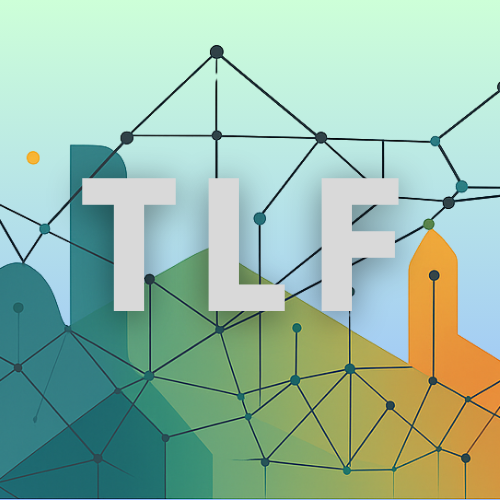
Why Conventional Leadership Wisdom Is Failing You
346 people died because Boeing forgot they build airplanes, not spreadsheets. Meanwhile, an aluminum company increased value 9x by focusing on worker safety over profits. What's the difference? The leadership approach.
What You'll Learn:
- 🔴 The Boeing disaster: How "run like a business" thinking killed engineering excellence
- 🟢 The Alcoa transformation: Why focusing on safety created trust (and massive profits)
- 📊 The $8.8 trillion problem: Global cost of employee disengagement
- ⚡ The real pattern: Trust consistently beats control in measurable outcomes
Key Examples:
- Boeing's culture shift from engineering-first to finance-first
- Paul O'Neill's radical safety focus at Alcoa (9x market value increase)
- Why military "mission command" works better than traditional hierarchy
- IBM, Ford, Sears, Kodak - what separated winners from losers
Episode Transcript:
“Why Conventional Leadership Wisdom Is Failing You”
Remember last week when I said most of what you’ve been taught about leadership is wrong?
Well, here’s a few cases to illustrate my point.
346 people died because Boeing’s leadership forgot what they were actually building. Not spreadsheets. Not financial reports. But Airplanes. Things that carry human beings through the sky.
Meanwhile, that “boring” aluminum company I teased last week? Their value increased NINE TIMES when their CEO did something everyone said was career suicide.
Today, I’ll show you what really happened at both companies. The evidence is so clear it challenges a lot of what we’ve been taught about leadership - and once you see it, it’s hard to unsee.
Can I share something personal? A while back, I got promoted to run an entire company. It was all very sudden: a large team, international customers, big responsibilities, the whole thing. And honestly? I was in over my head.
I’d been promoted for my technical skills, not because I knew how to lead. Sound familiar?
And here’s what nobody tells you: Most of us are managing, not leading. We’re good at our jobs, someone taps us on the shoulder, and hands us a team – or in my case, a whole company – and says “figure it out.”
I did my best with what I knew. But deep down, I felt something was off. My team seemed distant. Problems kept blindsiding me. Good people left for “better opportunities.” And the worst part? I knew things weren’t working, but I didn’t know how to fix it.
If you’re feeling this way right now, you’re not alone. The playbook we were given was written for a different world. And that’s exactly why I’m here – to share what I wish I’d known back then.
Boeing: When Spreadsheets Matter More Than Safety
Let me tell you exactly how conventional leadership thinking creates disasters.
After Boeing acquired McDonnell Douglas in 1997, something shifted. CEO Harry Stonecipher explicitly said he wanted Boeing to run “like a business rather than a great engineering firm.”
Let that sink in for a second! An airplane manufacturer… decided engineering excellence was optional.
They physically moved headquarters from Seattle to Chicago - separating leadership from the people who actually build planes. They installed countdown clocks to push production speed. They created what congressional investigators later called a “culture of concealment.”
The result? Two 737 MAX crashes. 346 lives lost. Boeing shareholders lost 87 billion dollars in market value since 2018. Their own employees saying they wouldn’t fly on Boeing planes and as one Boeing pilot wrote to a colleague: ‘This airplane is designed by clowns, who in turn are supervised by monkeys.’
Now, was culture the only factor? Of course not - engineering, regulation, many things went wrong. But the shift from engineering-first to finance-first culture was a root cause that insiders and investigators consistently pointed to. This wasn’t people being evil. This was smart people following the conventional playbook: Maximize shareholder value. Increase efficiency. Hit the numbers.
Alcoa: The Full Story
Now remember that aluminum company? Let me tell you what REALLY happened.
When Paul O’Neill became CEO of Alcoa in 1987, investors were expecting the usual song and dance. Market share. Profit margins. Cost cutting.
Instead, first shareholder meeting, O’Neill starts talking about… worker safety?
“Did this guy just say SAFETY is his top priority? In a METAL company? Has he lost his mind?”
Wall Street panicked. One investor literally ran out of the room to call his clients and say “SELL!”
But here’s what really happened:
- Market value increased from $3 billion to 27 billion dollars
- Net income: increased 7 times
- Productivity: up 45%
- Workplace injuries: dropped 90%
But HOW?
O’Neill did something radical - he gave workers his personal phone number. Told them to call if managers wouldn’t listen to safety concerns. He made safety the one thing that could never be compromised.
And here’s the magic: Focusing on safety forced everyone to understand every part of the production process. It required real communication between workers and management. It made problems visible before they became disasters.
Was safety the only factor in Alcoa’s success? …Again, probably no. But it created the conditions - trust, transparency, shared purpose - that made everything else possible. O’Neill didn’t just create safety. He created trust. And trust created everything else.
The Pattern Hidden in Plain Sight
- Boeing: Control, secrecy, shareholder first → Disaster
- Alcoa: Trust, transparency, people first → Triumph
This isn’t a fluke. Look at the pattern:
Examples when tight control dominated:
- Sears under Eddie Lampert - made divisions compete against each other, lost 11 billion dollars
- Kodak - invented digital photography but bureaucracy killed it, bankruptcy
And here’s what happend where trust was the focus:
- IBM under Lou Gerstner - broke down silos, focused on customers, 8x stock increase
- Ford under Alan Mulally - created radical transparency, the only Detroit automaker to skip the bailout
See the pattern?
Look, I’m not saying control is always bad - sometimes you need clear guardrails. But when leaders prioritize control over trust, organizations struggle. When they balance trust with accountability, they tend to thrive.
The $8.8 Trillion Wake-Up Call
Here’s a number that should make everyone sit up: Gallup’s 2023 research shows global employee disengagement costs $8.8 trillion Dollars annually. That’s 9% of global GDP!
But here’s the exciting part - that represents $8.8 trillion dollars of untapped potential just waiting to be unlocked. Not through better technology or working harder, but through better leadership.
And get this - disengaged employees have 49% higher accident rates and produce 60% more defects. These are people who see problems coming but don’t speak up. Why? Because it’s not safe to do so.
Why Your Leadership Training Is Making Things Worse
Think about most leadership training. What do they teach?
- Set clear expectations (sounds reasonable, until it becomes control)
- Monitor performance (makes sense, until it becomes surveillance)
- Provide feedback (seems helpful, until it becomes judgment)
- Drive results (feels necessary, until it becomes pressure)
Now, these aren’t inherently wrong - we need some structure! But the conventional playbook many of us inherited - often unintentionally - rewards predictability over learning. We’re using an operating system designed for factories where people did the same task 10,000 times.
But I would bet most of your people are knowledge workers. They solve problems. They create value with their minds. The old playbook says “minimize variance.” The new reality requires “maximize creativity.”
No wonder it’s not working!
The Military Gets It (Yes, Really)
Here’s something that might blow your mind: The military - yes, the ultimate hierarchy - has figured this out. They call it “mission command.” Give people clarity on the objective, the resources, the constraints. Then let them figure out how to achieve it.
Because when bullets are flying, you can’t wait for approval from headquarters.
And Smart officers also know something crucial: It’s the sergeant that really runs the unit. Work WITH that reality, not against it. In the next video we will discuss that in more detail!
Your Challenge This Week
Here’s what I want you to have a closer look at this week: How many problems in your organization exist because people were afraid to speak up?
- That project that’s behind schedule but nobody wants to admit it
- That process everyone knows is broken but follows anyway
- That customer complaint that got buried instead of addressed
Each one is a signal that you’re optimizing for the wrong things.
But Who Actually Makes Change Happen?
Now you might be thinking, “Okay Stefan, I get it. Trust beats control. But HOW do I actually create that trust? How do I change things when I’ve got resistant middle managers and skeptical teams?”
Ah, that’s where it gets really interesting. Because the people who actually determine whether your initiatives succeed or fail? They’re not who you think they are.
There’s a hidden power structure in every organization. People without fancy titles who have more real influence than some executives. And if you don’t understand this invisible network, you’re flying blind.
Next week, I’m going to show you exactly who really runs your organization. And once you see it, everything about leading change will make sense.
The Evidence Is Clear
Look, I know change is hard. I know it’s easier to stick with what you’ve always done. But the evidence is overwhelming:
- When leaders focus on control, organizations fail.
- When they focus on trust, organizations thrive.
This isn’t opinion. This is data. This is evidence. This is what actually works.
If this resonated - if you felt that spark of “yes, THIS is what’s been bothering me” - share it with another leader who’s ready for something better.
But more importantly, start watching your organization with new eyes. Where are you optimizing for control instead of creativity? Where are you managing instead of leading?
Because once you see it, you can change it. And next week, I’ll show you who your best allies in that change really are.
This is The Liberty Framework. Time to face reality.
See you next time.
